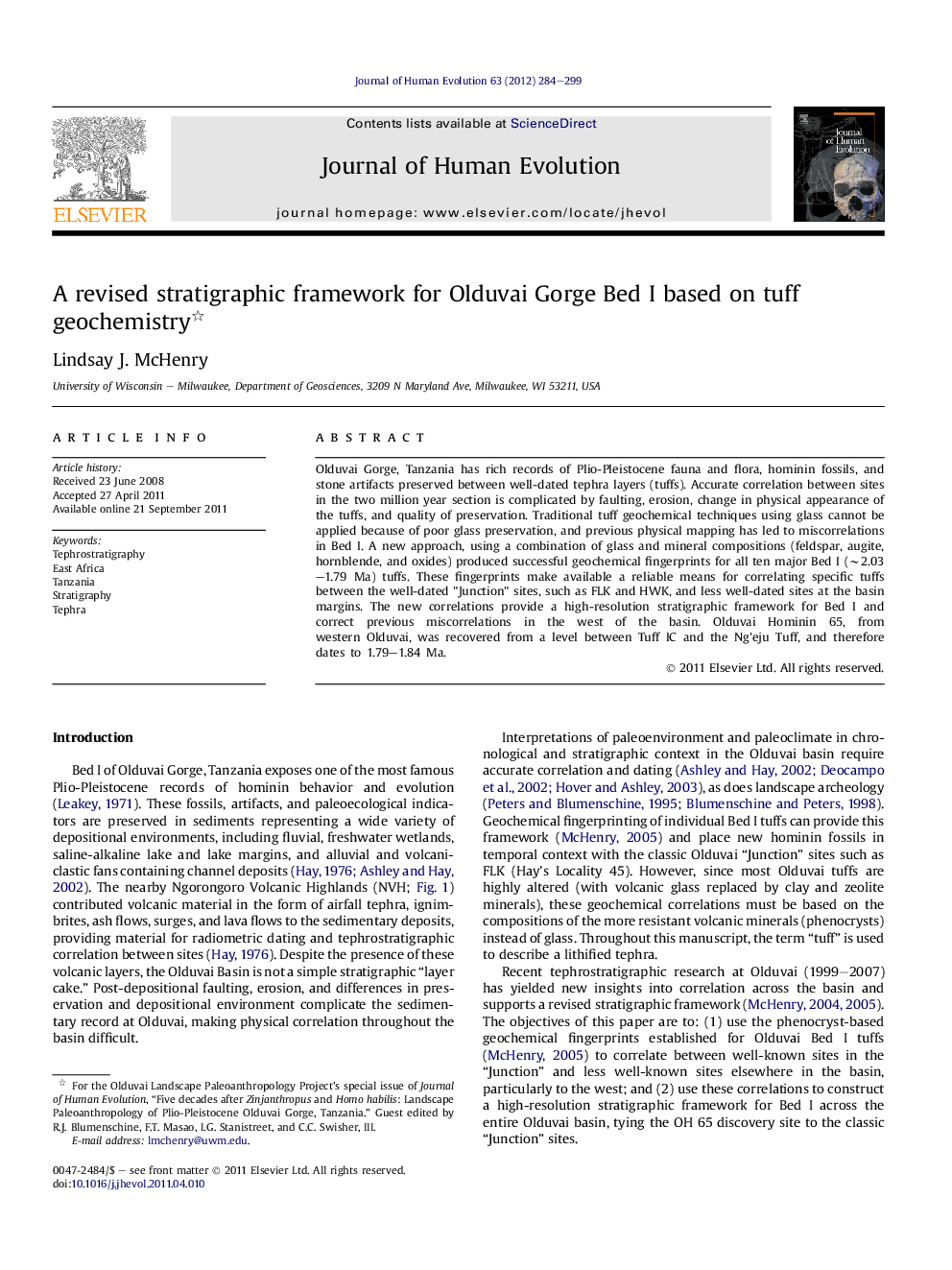| Article ID | Journal | Published Year | Pages | File Type |
|---|---|---|---|---|
| 4556446 | Journal of Human Evolution | 2012 | 16 Pages |
Olduvai Gorge, Tanzania has rich records of Plio-Pleistocene fauna and flora, hominin fossils, and stone artifacts preserved between well-dated tephra layers (tuffs). Accurate correlation between sites in the two million year section is complicated by faulting, erosion, change in physical appearance of the tuffs, and quality of preservation. Traditional tuff geochemical techniques using glass cannot be applied because of poor glass preservation, and previous physical mapping has led to miscorrelations in Bed I. A new approach, using a combination of glass and mineral compositions (feldspar, augite, hornblende, and oxides) produced successful geochemical fingerprints for all ten major Bed I (∼2.03–1.79 Ma) tuffs. These fingerprints make available a reliable means for correlating specific tuffs between the well-dated "Junction" sites, such as FLK and HWK, and less well-dated sites at the basin margins. The new correlations provide a high-resolution stratigraphic framework for Bed I and correct previous miscorrelations in the west of the basin. Olduvai Hominin 65, from western Olduvai, was recovered from a level between Tuff IC and the Ng’eju Tuff, and therefore dates to 1.79–1.84 Ma.
